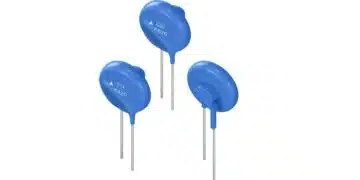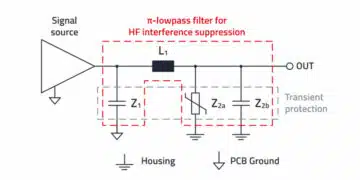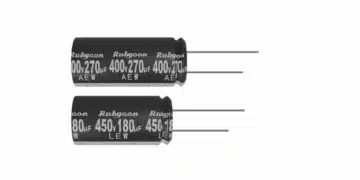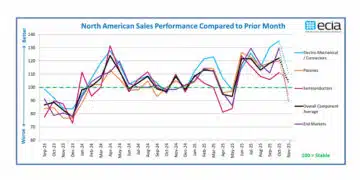source: TTI Market Eye article
06/22/2017 // Murray Slovick
The Internet of Things is not only driving the electronic component market, but it’s also influencing the direction design/development kits are taking.
While passives and connectors are changing to meet the new demands of IoT projects (for example many IoT nodes need capacitors for coupling, decoupling and filtering), manufacturers also are being asked to deliver smaller packages that deliver the same capacitance or resistance as their former larger versions along with excellent reliability and a high Mean Time To Failure (MTTF). A similar trend can be found in connectors targeting IoT applications. USB-C devices, for instance, enable engineers to create wearables with fewer connecting cables.
Given all of that, it should not be surprising to find suppliers of passives trying to simplify matters for engineers by providing a range of components and solutions for a large number of IoT applications, including wearable devices (e.g., health and fitness accessories), smart homes (automated lighting and heating), industrial automation (predictive maintenance) and connected and semi-autonomous cars.
One harbinger of the sort of thing engineers can expect in support of these efforts was the recent release of a new passive component IoT design kit from AVX.
Let’s take a closer look.
The new Passive Components for the Internet of Things Design Kit (Part Number: KIT-IOT) allows engineers to quickly identify effective solutions for IoT devices with widely varying requirements for power, data processing speed, form factor, and price, among other specifications. It is comprised of a broad sampling of passive components suited for use in the three primary IoT device networks: input voltage filtering and decoupling, timing device, and output impedance RF matching.
Including ceramic capacitors, inductors and crystal devices the kit aims to deliver all the passive components needed for application development in one package, greatly reducing the amount of time and effort required by designers to procure sample-use components.
Component solutions ideal for use in the input voltage filtering and decoupling networks of IoT devices represented in the Passive IoT Design Kit include:
- TCN Series capacitors. The undertab (face down) design of this conductive polymer series brings the benefit of high volumetric efficiency of capacitance in a low profile component. The series offers wide range of Cap and low ESR in several case sizes from 0805 to 7361 footprints and maximum component heights from 1mm to 2.00mm. These are well-suited for small power modules, handheld devices and other height-restricted applications. The conductive polymer electrode exhibits a benign failure mode under recommended use conditions. They are lead-free, halogen-free, RoHS-compliant parts.
- TCJ Series capacitors. The TCJ line offers what is said to be the industry’s highest rated voltage polymers, applicable for up to 100V applications. With low ESR, these capacitors are for general use in commercial, industrial, networking and other applications. The series offers wide range of Capacitance in 17 SMD case sizes with industry standard J-lead terminations and maximum operating temperature up to 125 degrees Celsius. Polymer capacitors standard derating rules 10% for low voltage products, 20% for high voltage ones apply. The conductive polymer electrode exhibits a benign failure mode under recommended use conditions. Again, these are lead-free, halogen free and RoHS compliant components.
- High-CV X5R MLCCs. The X5R dielectric is a Class II type dielectric suitable for higher capacitance applications. With a small case size X5R capacitors are well suited for decoupling and filtering applications in mobile devices, medical devices and other applications with size constraints.
- LMLP (Style C) Series Low-Profile SMD Power Inductors. These are low profile components ideal for size-constrained applications. SMD power inductors have a ferrite coating for shielding. Sizes range from 2.4 x 2.4 x 1.0 (mm) to 8.0 x 8.0 x 4.2 (mm). Inductance range is 0.8 to 220 uH and rated current range is 0.390 to 1.290 A.
As the IoT market continues to grow, companies with less than optimal experience in RF design are seeking to add wireless connectivity to existing products, or design new ones targeting the IoT. To relieve some of the common pain points in RF design for IoT devices AVX includes solutions for the output impedance matching networks of IoT RF antennas in the kit:
- U Series Ultra Low ESR RF/Microwave C0G (NP0) Chip Capacitors. These caps are designed for “Ultra” low ESR for applications in the communications market. Max ESR and effective capacitance are met on each value, producing lot to lot uniformity. Sizes available are EIA chip sizes 0402, 0603, 0805, and 1210.
- LCMC Series Multilayer Ceramic Chip Inductors for RF/Microwave applications. The LCMC series comes in standard EIA sizes: 0201 (0603), 0402 (1005), 0603 (1608), and are lead-free RoHS compliant parts. LCMC has surface mounting applicability and supports reflow soldering conditions.
- AntennaGuard Sub pF Varistors (SPVs). AVX Sub pF AG series varistors offer bi-directional ESD protection with < 1pF capacitance to minimize signal distortion in high speed data lines and other circuits that are sensitive to capacitance. Sub pF devices provide good response time to ESD strikes to protect sensitive circuits from over-voltage conditions. With digital system speeds increasing, this higher speed necessitates the use of ultra-low capacitance values to minimize signal distortion. Available in compact 0201 and 0402 low profile packages, with a working voltage of 10 – 18Vdc and capacitance of 0.47 to 0.8pF. The operating temperature range is -55°C to +125°C. Parts offer excellent lead free solderability thanks to Ni Barrier/100% Sn termination.
- Kyocera SAW Filters and Duplexers. These RF/Microwave components are well-suited for use in telecommunications, GPS, WLAN, and industrial/scientific/medical (ISM) band IoT applications,
The kit also includes crystal components that are useful in IoT applications requiring tight frequency stability, such as in clock management, MCUs, application processors, and wireless applications such as Bluetooth low energy (BLE), WIFI, and GPS. The crystal units (CX2016DB and ST3215SB series) are from Kyocera (AVX is a member of the Kyocera group). The kit also contains the U series of RF ceramic capacitors for crystal unit loading.































